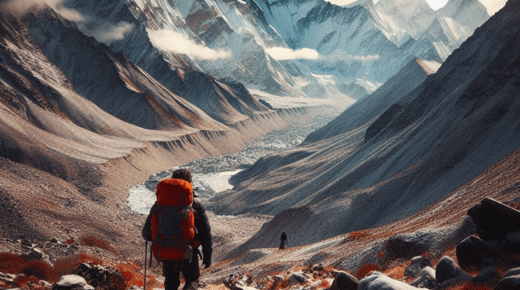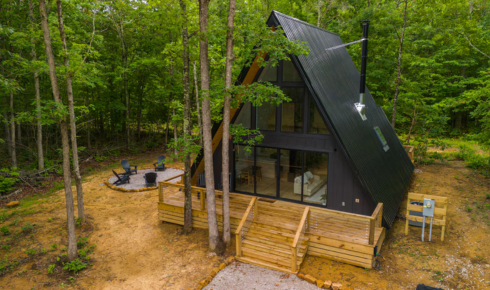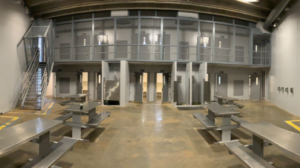One of the most exciting trekking adventures on earth is the Everest Three High Passes trek where trekkers can explore the magnificent beauty of the Himalayas while testing their physical and mental limits. Over this epic journey, you will traverse three high-altitude passes — Renjo La, Cho La, and Kongma La, all over 5,000 meters above sea level — and marvel at views of earth’s highest peaks including Mount Everest, Lhotse, Makalu, and Cho Oyu.
To really enjoy the journey, you will have to trek with Sherpas Sherpas know the best. Sherpas bring more than just experience; they have a deep knowledge of the region’s challenges, the intricacies of altitude acclimatization, and the nuances of ensuring that trekkers are both safe and comfortable on their journey. They know the area well (where to camp, when there is no rain, where locals go hiking) and are very knowledgeable about altitude sickness, a common concern for those on such high peaks.
Physically, it is a challenging trek that needs a decent level of fitness, endurance, and mental strength to complete. The high passes are famously challenging, with steep climbs, rocky trails, and, at times, unpredictable weather. But the rewards can be great. Every pass provides magnificent panoramic views that are worth the effort, and it’s such a unique cultural opportunity to see Sherpa villages such as Namche Bazaar, Dingboche, and Gokyo.
So if you want a well-off and successful trek, acclimatization is the key to it, and this is where Sherpas come in the role. Understanding the terrain and experience in managing high-altitude challenges make the trek safe and enjoyable. Whether assisting with pacing, emotional support, or simply providing local insight, Sherpas makes every part of the Everest Three High Passes trek feel special to do, making it a bucket-list experience.
The Sherpas: Who Are They and What Do They Do?
Sherpas are an ethnic group that originates from the Khumbu region of Nepal, in the shadow of Mount Everest. Famed for their astounding stamina and profound relationship with the Himalayas, Sherpas have been linked closely with mountaineering and trekking to high altitudes. They’re absolutely indispensable in high-altitude endeavors, thanks to their unique physiological adaptations that allow them to function in environments where there’s not much oxygen. “Example: Sherpa”Sherpa” is a term often used to refer to mountain guides and porters, although it refers to the actual ethnic group. In many Himalayan treks, including in the Everest region, Sherpas are an indispensable part of the experience, helping trekkers navigate the physical and logistical elements of this inhospitable climate. The Sherpa has in-depth details of the weather, the culture, and the terrain which is critical for the success of high-altitude expeditions. Although Sherpas are internationally known for their endeavors in the world of mountaineering, their role with treks is not limited to aiding climbers; they have become permanently etched into the Everest trekking experience as both a physical protector and provider of cultural insight.
Meet the Sherpas Who Make High-Altitude Trekking Possible
Everest Three Pass trek elevation The success of high-altitude trekking in Nepal lies in Sherpas. They have a physical resiliency formed from years of life in the Mount Everest region that enables them to endure elements that would likely defeat the average trekker. Their natural capacity for acclimatization to height provides Sherpas with a key benefit in settings of low oxygen. Not only do they guide trekkers through steep, difficult terrain, but they also provide vital support for safety at every stage of the trip. Besides strength and stamina, Sherpas’ intimate understanding of the region’s geography and climate allows them to make informed decisions about weather trends, trail conditions, and potential dangers. To understand the importance of sherpas, we need to know that sherpas are also highly trained in spotting and lowering the risks of altitude sickness and other conditions that can affect trekkers in extreme climates. Vastly knowledgeable on the topics of mountaineering, the absence of such characters leaves even the most grateful of trekkers inept on the matter with very few to guide them in such high peaks and inhospitable terrain, effectively rendering several higher treks unequivocally impossible without their collective assistance; making them arguably the most crucial point of all Himalayan treks.
Local knowledge and navigation expertise
A key reason behind Sherpas being indispensable in high-altitude trekking is their impeccable local knowledge and navigation skills. Having grown up in the rugged mountains of the Khumbu region, Sherpas develop an intimate understanding of the terrain’s nuances, weather patterns, and career trails, all of which host a path for them to follow even through the most remote and challenging routes. This expertise encompasses local knowledge, but it goes far beyond navigating the best trails: It also means understanding these hazards, like crevasses, avalanches, or high winds, which are dangerous in the Everest corridor. Sherpas also know how to change the path according to weather situations to avoid risking trekkers’ lives. Their knowledge of the region’s geography, coupled with their ability to read subtle environmental cues, helps them guide trekkers with confidence. Its navigation skills greatly minimize the risk of lost or misdirected and help trekkers get back on track, even in unknown and challenging terrain. In effect, the Sherpa, as a guide, is about more than just leading the way, it is about making sure that every step taken is done so through a complete understanding of the surroundings.
Sherpa Support for Safety and Acclimatization
Everest Three Pass trek duration Sherpas are an absolute lifeline in terms of the safety and acclimatization of hikers in the high-altitude Everest territory as well. Acclimatization — the gradual adjustment of your body to thinner air — is essential to prevent this common ailment among trekkers in high-altitude conditions. Sherpas are knowledgeable about altitude sickness—what to look for and how to deal with it. They are aware of when to recommend a rest day and when it’s safe to push higher, giving trekkers the best opportunity to acclimatize properly. Along with managing acclimatization, Sherpas assist with safety, introducing trekkers to the challenging terrain, ensuring proper techniques are applied to prevent injury, and providing first-aid in emergencies. They’re experts in helping prevent and respond to medical problems that may happen because they have trained thousands of people on how to travel in the mountains and at high altitudes. In extreme instances, Sherpas undergo extensive training in high-altitude rescue missions, which can involve leading trekkers back to lower altitudes or preparing for emergency evacuations. The Sherpas’ dedication to the safety of trekkers is a fundamental principle of any high-altitude excursion in the Everest region.
Help with Gear and Portage
Everest Three Pass trek route Sherpas are a vital part of any attempt at a challenging trek; their help with gear, portage, etc. helps trekkers concentrate on the experience of the trek for work rather than the physical toll of carrying heavy loads. On treks at high altitudes like the Everest Three High Passes, trekkers must carry the necessary equipment including, clothes, food, water, and personal gear. Much of this gear is carried by Sherpas, who often work as porters, so trekkers need to carry only their daypacks. Not only does this help lighten the load for trekkers, but it also means that trekkers can be more energized for challenging climbs and long days of trekking. Sherpas are able to carry heavy loads over rugged terrain, at high subliminal altitudes, a feat that would be almost impossible for most trekkers. Due to their strength and experience, they are also great porters and are able to carry heavy backpacks and trek through tough mountain trails extremely well. And, for the trekkers who want to accomplish the trek without overstraining. In addition, Sherpas’ knowledge of the gear and logistics of trekking in the region means that all the equipment is moved the most efficiently and safely. Simply relieving some of that weight off the human frame, Sherpas makes it possible not only to focus on the trek but also to do it comfortably and with greater success.
During the Trek: Cultural Insights from Sherpas
Aside from their logistics and physical support, Sherpas also provide trekkers with cultural context along the way. Sherpas are the indigenous people of the Khumbu region and have a deep connection to the traditions, land, and spiritual practices. As trekkers walk through Sherpa villages and monasteries, they are able to learn about the region’s history, religion, and culture. Nepal Sherpas are often informal cultural guides, regaling travelers with stories and the meaning of landmarks, like the Buddhist stupas, prayer flags, and monasteries along the way. They give insight into the local people’s everyday lives, their customs, family arrangements, and how their Buddhist belief system informs the way they see the world. But your Sherpas also expose you to the hospitality and generosity that are essential elements of Sherpa culture, often inviting trekkers into their homes or giving insight into local festivals and rituals. So much more than just a trek, this cultural exchange adds richness to the experience while showing a deeper understanding of the region’s history and the Sherpas’ ongoing connection to the mountains. The Sherpas have a unique cultural richness to offer on the trek based on their personal connection to the land, which makes it an experience above and beyond a physical feat.
Hiking Over the Renjo La Pass
Renjo La Pass trekking is among one of the best things on the Everest Three High Passes trek. Located at 5,360 meters (17,590 feet), Renjo La is famous for picturesque vistas and comparatively less congested trails that allow trekkers to enjoy the tranquillity of the Everest region. The journey to Renjo La is a strenuous, uphill hike, with rocky trails and some snow-covered areas, testing both the physical and mental endurance of the trekkers.
Everest Three Pass trekking experience The trek route starts from the beautiful Gokyo Valley with the Gokyo Lakes before reaching the climb. The views get even more impressive in the thousand feet after, with sweeping views of Mount Everest, Lhotse, Makalu, and other surrounding peaks. The summit of the Renjo La offers stunning panoramas of the Himalayas, rewarding trekkers with a sense of achievement.
The actual descent from Renjo La is a little challenging, with rocky paths along which you must be careful. The entire hike can be a little rugged as the pass is less traveled than the other high passes but the scenery more than makes up for the physical exertion. With Renjo La being one of the best sights along the entire Everest Three High Passes trek, trekking through is a memorable experience filled with solitude, excitement, and unmatched beauty.
Altitude Sickness and Acclimatization Tips
Altitude sickness is one of the main concerns of trekking in the Everest area, particularly on the high passes, such as Renjo La, Cho La, and Kongma La, which are all above 5,000-meter (16,400-foot) elevation. When you go to high altitudes, the oxygen levels become lower, and it can cause you headache, dizziness, nausea, or shortness of breath. Acclimatization is essential to avoid altitude sickness, so, to have a safe trek proper planning is the key.
One of the key ways to build acclimatization is to adhere to the “climb high, sleep low” principle. That means trekking to a higher altitude during the day but descending again to a lower elevation to sleep, so your body can acclimate slowly. Rest days —like the acclimatization days in Namche Bazaar and Dingboche — are crucial to ensure that your body has time to adjust to altitude. Staying well-hydrated and consuming a diet rich in energy is also beneficial as your body adjusts to the physical stresses of the trek.
And it’s important to listen to your body. If you’re starting to notice symptoms of altitude sickness, like a dull headache or nausea, it’s important to stop and rest. Sometimes you will need to descend to a lower altitude. Because Sherpas are trained at handling altitude sickness, they make sure that trekkers are following a proper schedule to acclimatize themselves, that is why they play a crucial role in keeping trekkers safe on the high passes.
All the Must-Have Gear and Equipment for The Trek
Proper gear and equipment are required for the Everest Three High Passes trek. To go further, with challenging terrain, high altitudes, and unpredictable weather conditions, it requires preparation. First of all, a very solid pair of trekking boots with good ankle support is essential for hiking on bumpy trails and icy surfaces. Waterproof, insulated boots, which help guard against snow and low temperatures, can be optimal.
Everest Three Pass Trek Layered clothing is essential on the trek to stay comfortable. A moisture-wicking base layer pulls sweat away from your skin, and an insulating mid-layer, like fleece or down, retains heat. A waterproof, windproof outer layer is essential for rain, snow, and wind protection. And don’t forget gloves, hats , and a neck gaiter to keep your extremities safe from the cold.
So a well-made, four-season sleeping bag rated below freezing is essential for cold nights at high altitudes. A trekking pole helps with balance and prevents knee strain while going up and down, especially in hilly terrain. Also, a good headlamp with spare batteries is essential for early starts or late finishes.
Although some gurgling streams are pooled in shady groves along the trail, it’s important to bring a water purification system (like a filter or purification tablets). Consider bringing a fully-stocked first aid kit, sunscreen, and long-lasting snacks to avoid any emergency while you are out on your trip. Wearing the proper gear will help you stay comfortable and safe throughout your trek.
Courage and Emergency Protocols on the Trek
Safety is the most crucial aspect when trekking the Everest Three High Passes, and preparation for emergencies is fundamental for a successful adventure. The challenging terrain, elevation, and changing weather conditions pose risks and it’s important to know how to stay safe and how to handle emergencies.
Everest Three Pass Trek itinerary Altitude sickness is one of the most common hazards and it’s good to be familiar with its symptoms, including headaches, dizziness, nausea, and shortness of breath. If any of these symptoms develop, discontinue ascending and rest. In many cases, descending to a lower altitude is required if symptoms worsen. Sherpas are trained to detect the early symptoms of altitude sickness and will do what needs to be done to ensure trekkers’ safety.
Weather in the Everest region also can turn abruptly, with snowstorms and fierce winds creating dangerous conditions. Be equipped with weather-appropriate clothing, including waterproof and windproof layers, and be prepared to change your route if conditions turn unsafe. In the event of an emergency, like a major injury or health problem, Sherpas are trained to assess the situation and take action, be it giving first aid or arranging evacuation efforts.
A satellite phone, or emergency communication device, can be key in remote areas where assistance is far away. If needed, emergency evacuation services (e.g. helicopter rescues) can be arranged, but timing is critical, and communication and coordination are key. Sherpas are trained in how to manage such emergencies, so trekkers can be sure that they’re in safe hands if something should happen. Read more about Gimkit Join
Tips for Trekking with Sherpas That Will Help You On Your Journey
In fact, a successful trek through the Everest Three High Passes is just as much about preparation and mental fortitude as it is about physical fitness. You’ll find that trek with sherpas provides you with the support, expertise, and local knowledge needed for this challenging adventure. To get the most out of your experience, you need to prepare physically and mentally.
Make sure you’re physically fit before attempting the trek by doing long hikes and training in varied terrain. The better condition your body is in, the easier those steep climbs, rocky trails, and high-altitude passes will be to conquer. You’ll want to remember to build some altitude training into your regime to teach your body how to acclimate to the low oxygen levels at altitude.
Everest Three Pass Trek cost Once on the trail, settle into a pace and listen to your body. The Everest Three High Passes trek is not a race so it’s wise to pace yourself, particularly when crossing the high passes. The Sherpas will manage your pace, and they’ll know if you’re pushing your limits — that’s key to preventing altitude sickness.
Drink water, increase calorie intake by eating energizing foods, and take breaks from time to time. You’re going to hike up high, and each day you’ll need to implement some of these strategies, and that’s where your Sherpa comes in. Finally, be forward-looking and enjoy the ride. Exploring with Sherpas provides not only the opportunity to embrace some of the highest peaks in the world, but an insight into the culture, history, and traditions of the Everest region. So, have fun, and it will definitely be a whole new chapter in your life!
















+ There are no comments
Add yours